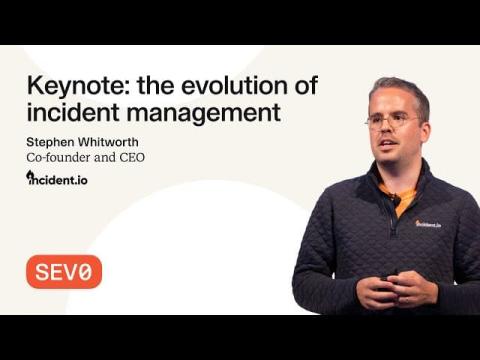The Incident Maturity Model
I want to walk you through how incident management has evolved, drawing from real data and the experiences of some of the most sophisticated tech organizations out there. I'll also introduce you to a framework we’ve developed at incident.io: the Incident Maturity Model. This framework is the result of thousands of conversations with companies and provides a clear roadmap to help your organization improve its incident management practices—no matter where you're starting from.











